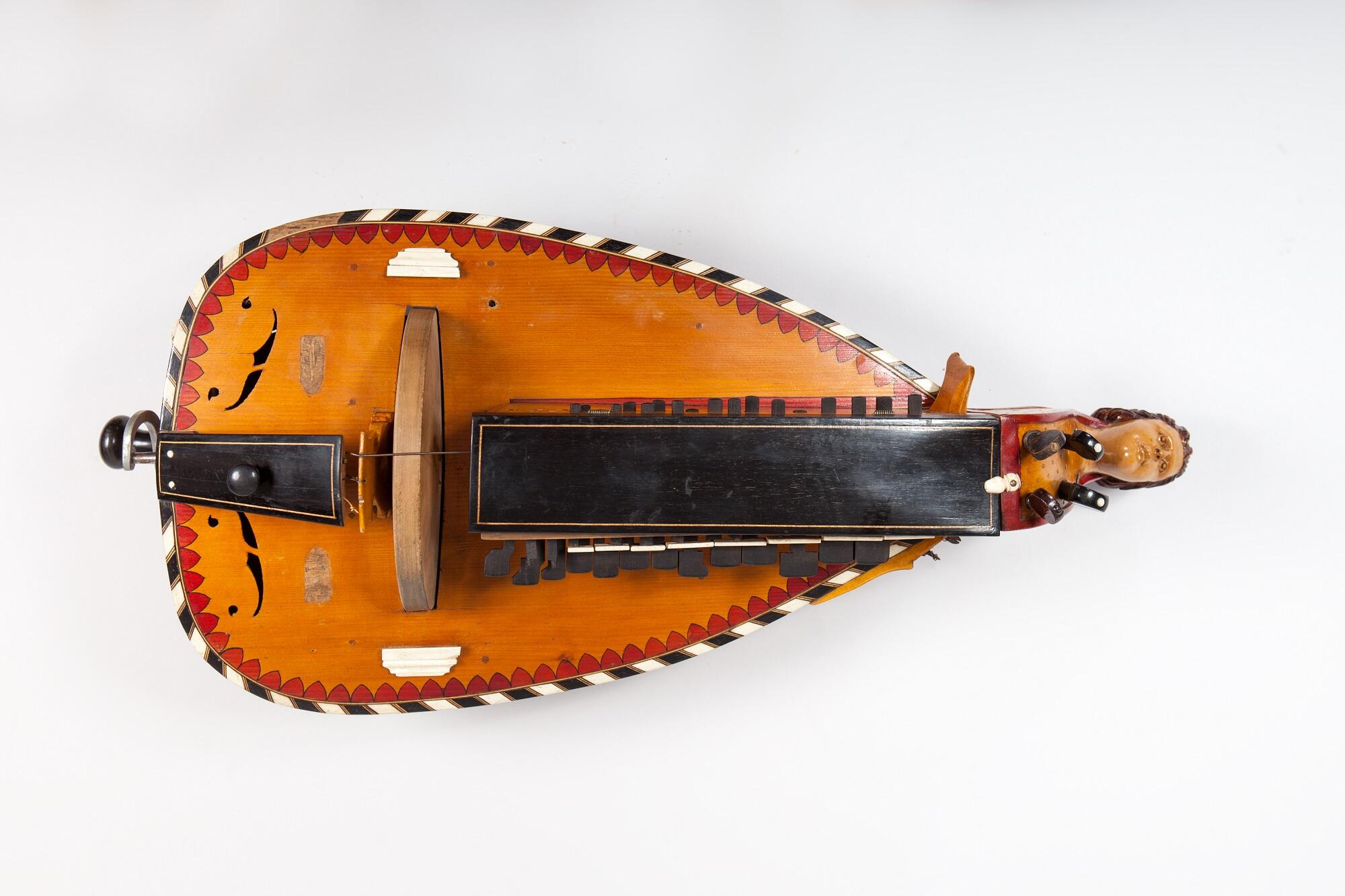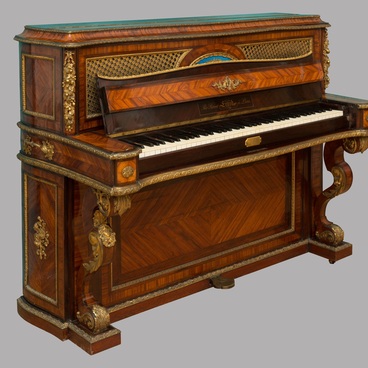A 4-string 10-key hurdy-gurdy (vielle) with 2 melody and 2 bourdon
strings. The instrument has a composed fiddle-shaped body. The pegbox is decorated with a man’s carved head made of maple. The soundboard is framed with alternating pieces of bone and ebony. The pegs are encrusted with mother-of-pearl.
First mentions of a hurdy-gurdy date from the 10th century.
Then it was known as “organistrum”. The instrument was of considerable dimensions and designed for playing by two
musicians, one rotating the wheel, the other manipulating the keys of the two-handed keyboard. In the 13th century,
a single musician was able to play the instrument then called
“symphony”. By the 14th century, the hurdy-gurdy had gained
the status of the instrument popular among the lower social strata. And only once, in the 18th century, the instrument called “wheeled vielle” gained interest with the French nobles. The vielle became a structurally adjusted, carefully made and rich in decoration instrument. It is then that vielle with pipe organ (vielle organisée) became equally popular; that was a traditional hurdy-gurdy, with a portable organ and windbags
mounted in the body.



